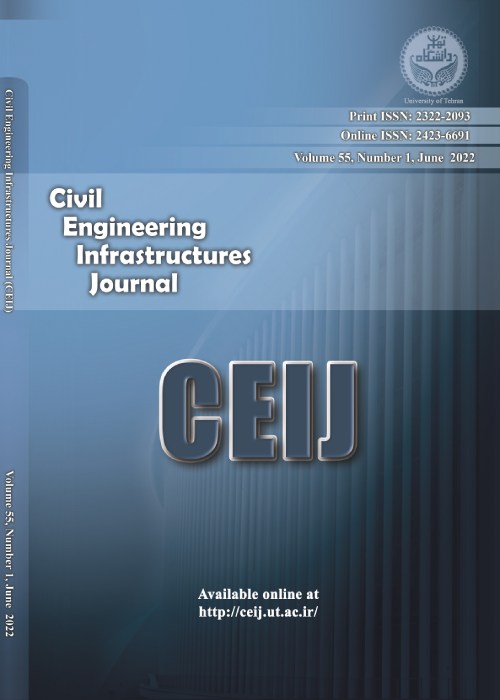Solving SH Wave Equation for Several Boundary Conditions
Abstract:
In this article we use wavelet transform to solve scalar elastic wave equation with real boundary condition in earthquake engineering problems (i.e., soil-structure interaction). Multiresolution property, localization and inherent adaptive features of wavelet transform make this approach appropriate for solving PDEs; moreover, fast algorithms are developed. Working in the framework of wavelet, here projection schemes are used, i.e., operators (such as derivatives dmf/dxm) are directly projected in the wavelet spaces. There, the projected operators are sparse and banded matrixes; moreover they are represented in different levels of resolution. The width of the bands could be reduced by thresholding the coefficients of the matrixes; i.e., at first a predefined threshold is assumed, then the coefficients, whose values are smaller than the threshold value, are replaced by zero; thereby, an inherent adaption is attained, increasing the computational speed. The wavelet families used here is Daubechies wavelet, an orthogonal family with compact support property. This kind of wavelet leads to the most regular approximation with the smallest support of wavelets. Temporal time integration is done by explicit semi-group method. In this method, by using explicit approach, the obtained results are comparable with common implicit schemes. In this work propagation of SH waves in a infinite region, infinite media containing a hole (such as tunnels), and interaction of a shear wall and a semi-infinite domain are investigated. To simulations the free surfaces, here, the material with nearly zero mechanical properties are used, i.e., an artificial domain (like air) is modeled. Hence, it is not necessary to simulate the free boundaries. Simulation of such boundaries is a challenge problem in wavelet-based projection schemes; in common wavelet theories (first generation wavelet families) it is needed to modify the wavelets in the vicinity of the boundaries to simulate Dirichlet and Neumann boundary conditions. The infinite boundaries are simulated via absorbing boundaries. They are introduced explicitly by modification the wave equation, adding artificial viscosity in the computational domain. The viscosity function is zero in domain and increases slightly while approaches to the infinite boundaries. The results indicate that for a grid with constant points, the proposed method is more stable than the common finite difference scheme. Moreover, the results show that interaction of structure and soil is an important factor, for example, for shear walls with higher density, smaller responses are captured during propagation of waves in the earth. Also when length of propagating waves is comparable with structure size, high localized responses in the structure will be occurred; therefore common beam element formulation could not be used.
Language:
Persian
Published:
Civil Engineering Infrastructures Journal, Volume:45 Issue: 1, 2011
Page:
99
magiran.com/p864274
دانلود و مطالعه متن این مقاله با یکی از روشهای زیر امکان پذیر است:
اشتراک شخصی
با عضویت و پرداخت آنلاین حق اشتراک یکساله به مبلغ 1,390,000ريال میتوانید 70 عنوان مطلب دانلود کنید!
اشتراک سازمانی
به کتابخانه دانشگاه یا محل کار خود پیشنهاد کنید تا اشتراک سازمانی این پایگاه را برای دسترسی نامحدود همه کاربران به متن مطالب تهیه نمایند!
توجه!
- حق عضویت دریافتی صرف حمایت از نشریات عضو و نگهداری، تکمیل و توسعه مگیران میشود.
- پرداخت حق اشتراک و دانلود مقالات اجازه بازنشر آن در سایر رسانههای چاپی و دیجیتال را به کاربر نمیدهد.
In order to view content subscription is required
Personal subscription
Subscribe magiran.com for 70 € euros via PayPal and download 70 articles during a year.
Organization subscription
Please contact us to subscribe your university or library for unlimited access!


